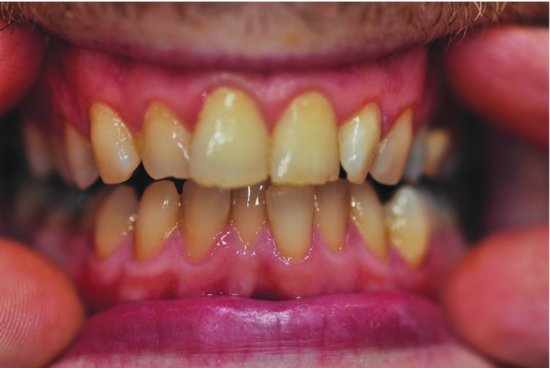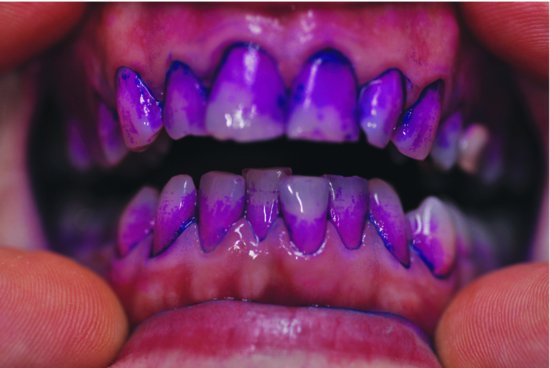Chapter 19
Practical oral hygiene instruction
INTRODUCTION
Practical oral hygiene instruction (OHI) forms a vital part of the role of the oral health educator (OHE).
In order to gain confidence in giving instruction and practical help to patients, the OHE needs to understand the theories of tooth cleaning and continually update their knowledge on the latest techniques and methods. (Instruction on cleaning the mouths of at-risk patients is covered in Section 5.)
UK law is ambiguous on whether a dental nurse can put toothbrushes and other cleaning aids in patients’ mouths. A good guideline for the OHE is to have written instructions from their dentist on what they are allowed to carry out, and observe the General Dental Council’s Scope of Practice (see Chapter 31).
In this age of litigation, the OHE must make contemporaneous notes in case a patient should ever decide that they want to make a complaint. Consent and the explanation of disease are of paramount importance and should be documented.
TEACHING PLAQUE CONTROL SKILLS
Research shows [1–3] that whilst effective plaque control alone has little effect on the rate of caries, it is the single most important method of preventing periodontal disease. (In the prevention of caries, other factors such as diet, fissure sealing and fluoride are also involved.)
In practical OHI sessions, the OHE must be able to:
- Motivate patients to improve plaque control.
- Explain and demonstrate disclosing.
- Give practical instruction on interdental cleaning (so toothpaste penetrates interdentally).
- Advise on the most suitable toothbrush for their use.
- Demonstrate suitable toothbrushing techniques.
- Discuss the advantages and disadvantages of various toothpastes.
- Spit but don’t rinse (toothpaste in the sink will not benefit the patient).
Patient motivation
Communication skills are heavily involved in motivation, although the OHE will also need:
- Time to talk to the patient, to find out background information about them.
- A relaxed, unhurried approach.
- Empathy with patient difficulties and problems (see Chapter 15).
- Regular appointments to assess progress.
- Endless patience.
Disclosing
The use of disclosing tablets or solution is a good way of enabling patients to identify plaque, both fresh and mature plaque, highlighted by different colour staining (Figure 19.1). This can be combined with a plaque index and used to motivate the patient by producing a ‘score’ which the patient is encouraged to reduce by improved oral hygiene methods (see Chapter 29).
Some patients may be reluctant to have their mouths disclosed in the practice, as they may not want to walk around with disclosed mouths afterwards. In these cases, the OHE should explain how disclosing works, so that the patients can disclose their own mouths at home.
Suggest the patient discloses:
- Regularly – perhaps once a week until plaque-removing skills improve.
- After brushing and interdental cleaning to highlight difficult areas.
- At a suitable time of day (e.g. not when they are about to go out).
The patient can also be advised to apply a thin layer of petroleum jelly to the lips to prevent staining.
There are various disclosing agents available: the common active ingredient being erythrosine (a harmless, tasteless, red food dye). Disclosing can be a fun method for encouraging children to improve their oral hygiene and parents could take photographs to compare results as the children practise and hopefully improve their oral hygiene techniques. When advising children, you must involve the parent and explain the correct use of the tablet or solution and that can be a messy procedure.
Disclosing exercises
It is a good idea to practise your own disclosing techniques using the following exercises.
Exercise 1
Exercise 2
Now you can move on and test your skills on someone else.
Exercise 3
Plaque indicator kits
Plaque indicator kits can be used to demonstrate the age of plaque – showing fresh and more mature deposits depending on the colour – pink/red (for fresh plaque) to blue/purple, which is at least 48 hours old.
A sample of plaque is removed and placed in a liquid, then left for 5 minutes to develop. The colour is checked against a pH chart denoting its acidity level, which could be indicative of a patient’s caries susceptibility. The plaque is then exposed to a solution representing saliva to demonstrate the saliva’s buffering ability.
Toothbrushes
Advise patients on a suitable choice of toothbrush. There are so many toothbrushes on the market now that it is difficult to know which one to advise. Many dental practices sell specific brands and the OHE will probably use brushes from the range stocked for demonstration purposes.
It is more importan/>
Stay updated, free dental videos. Join our Telegram channel

VIDEdental - Online dental courses




